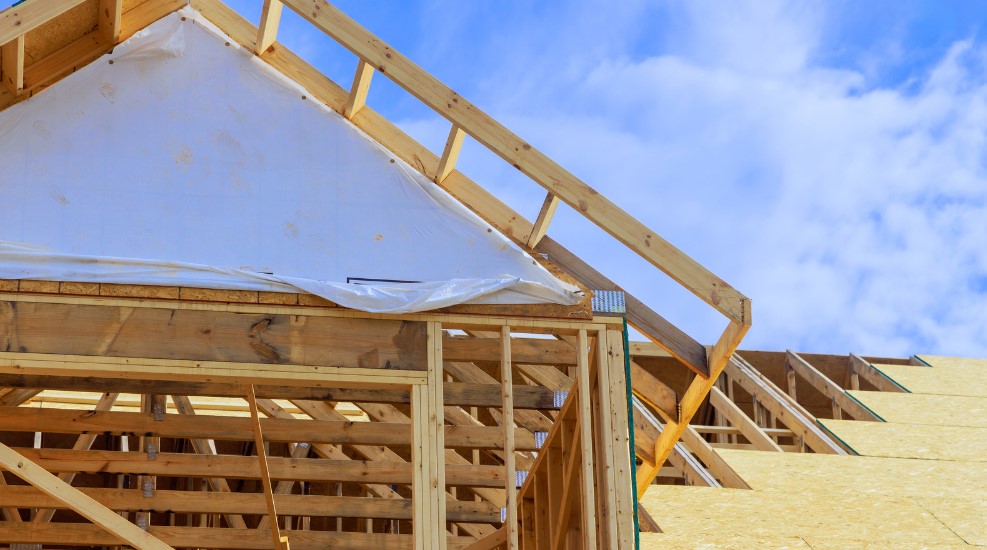The effects of climate change are drastically changing the homebuilding sector and driving architects and builders to reconsider conventional building methods.
Resilient and sustainable housing solutions are becoming more important as extreme events, rising temperatures, and greater precipitation become more common. This change underlines the need for environmentally friendly materials, energy-efficient systems, and the part creative technologies play in improving building and design.
The homebuilding industry can better handle the issues presented by climate change and promote long-term environmental sustainability by including community involvement and supporting policy frameworks.
Sustainable Innovation of The Future of Homebuilding
The Impact of Climate Change on Homebuilding
Rising temperatures, higher precipitation, and more often occurring extreme weather events are changing the homebuilding scene. These environmental changes force builders architects, and construction company to embrace more robust designs by requiring a review of conventional building techniques.
Homes today must resist floods, heat waves, and other climate-related stresses, which drive material and technological advances. The knowledge from businesses such as sub-cool-fm.co.uk becomes useful as builders apply these adaptable techniques.
Focussing on mechanical services and air conditioning, they provide customised solutions that improve the comfort and sustainability of homes and businesses.
Furthermore, incorporating sustainable practices is becoming more crucial since energy efficiency and lower carbon footprints take the front stage in response to mounting environmental issues.

Sustainable Building Practices for Resilience
Building dwellings that can withstand the challenges presented by climate change depends on stressing environmentally friendly materials and energy-efficient technologies.
Using sustainable materials like recycled wood and bamboo lessens environmental effects and improves building longevity. Adding green rooftops, rainwater collecting systems and solar panels helps with sustainability and reduces house utilities.
Modular building methods can also help simplify the construction process, reducing waste and enabling more flexibility in response to changing environmental circumstances.
Technology and Innovation in Home Design
Technological developments are changing the design and construction of houses, allowing for more sustainable and effective solutions. Using sensors and automation, smart home systems provide real-time energy use monitoring, hence improving comfort and efficiency.
Virtual and augmented reality tools let homeowners envisage and change their environments before building starts, facilitating immersive design experiences.
Moreover, technologies like 3D printing are transforming the building process, lowering waste and enabling unparalleled personalisation at once.
These technological advancements not only increase the liveability of houses but also help them be resilient against climate problems.

Community Engagement and Policy Solutions
Building homes that really represent local needs and values depends on the active participation of communities in the planning and development process.
Talking about sustainable living and climate resilience among neighbours helps them feel accountable for their surroundings. Furthermore, rules that support sustainable building standards and encourage environmentally friendly projects depend heavily on legislators.
Local governments, developers, and communities working together can produce creative ideas that solve particular regional issues, guaranteeing that new homes satisfy current needs and support long-term environmental sustainability and resilience.
Final Thoughts
The changing terrain of homebuilding in response to climate change emphasises how urgently creativity and cooperation among many sectors are needed.
The building sector can build strong homes that resist environmental difficulties and support long-term ecological health by prioritising sustainable practices, adopting technology advances, and encouraging community involvement.
Working together, builders, architects, and legislators can guarantee that future developments not only meet the needs and values of the communities they serve but also reflect their own, so enabling a more sustainable and resilient built environment.
Author Profile

- Blogger by Passion | Contributor to many Business Blogs in the United Kingdom | Fascinated to Write Blogs in Business & Startup Niches |
Latest entries
 BusinessJanuary 9, 20266 Fastest Cash House Buyers in the UK 2026
BusinessJanuary 9, 20266 Fastest Cash House Buyers in the UK 2026 BusinessDecember 12, 2025The Smart SME’s Guide to Future-Proofing Physical Assets
BusinessDecember 12, 2025The Smart SME’s Guide to Future-Proofing Physical Assets FinanceOctober 28, 2025How to Measure the ROI of Your Promotional Product Campaigns?
FinanceOctober 28, 2025How to Measure the ROI of Your Promotional Product Campaigns? Home & LivingOctober 4, 2025Moving Forward When Leicester Family Dynamics Change
Home & LivingOctober 4, 2025Moving Forward When Leicester Family Dynamics Change





